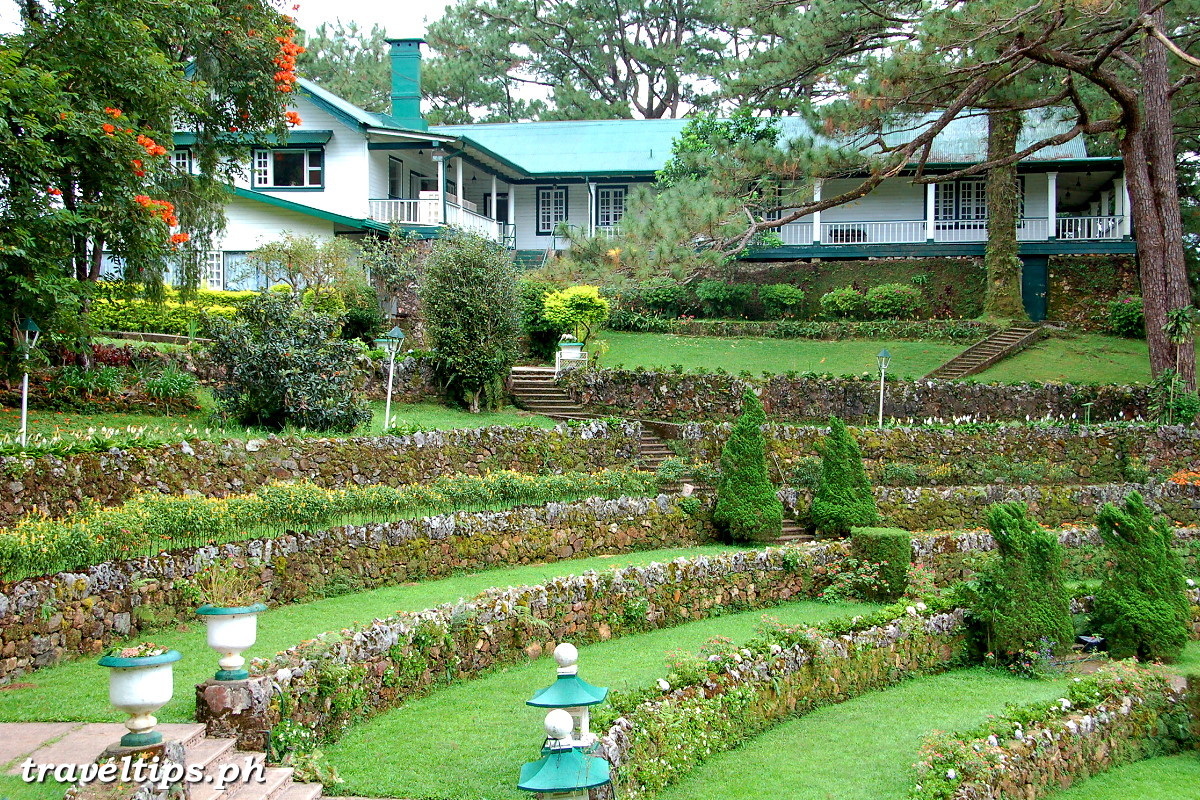|
Perched at about 1,540 meters up in the Cordilleras, Baguio offers a rejuvenating getaway that harmoniously blends nature, art, and history.
| Bell House, vintage American-style house turned into a museum, Camp John Hay |
 |
Photography: Reynald Nuñez Source: traveltips.ph
|
Baguio is often fondly referred to as the Philippines’ Summer Capital, due to its pleasant weather and lush pine forests.
But aside from its cool climate and pine trees, the city boasts a vibrant culture, featuring a living canvas of indigenous traditions and artistic expression. Beyond the usual tourist circuit, Baguio is home to a thriving creative community and a diverse culinary scene.
Baguio’s story began as a rest and recreation destination for the American colonial forces in the early 1900s, who were drawn to its soothing climate and surroundings. Its rich heritage, however, dates back to the indigenous Kankana-ey and Ibaloi peoples.
Today, Baguio is a bustling urban center, while its cultural roots and natural beauty remain central to its charm.
Signature spots and highland experiences include:
- Burnham Park: Known as the city’s green lung—perfect for paddle boating, biking, or leisurely walks among flower beds. Designed by American architect Daniel Burnham, this urban sanctuary is the heart of Baguio. Visitors can enjoy boating on the man-made lagoon, rent bicycles, or simply wander and observe the crowd.
- Mines View Observation Deck: Offering stunning panoramic views of the Cordillera mountain range and Benguet’s mining valleys, this popular observation deck is a favorite among visitors, replete with souvenir stalls and opportunities for photos in traditional attire.
- Camp John Hay Park: Once a U.S. military base, this forested area is now a sprawling resort featuring lovely gardens, walking trails, and eco-trails.
- Wright Park: Situated close to The Mansion, the summer residence of the president, this park is renowned for its horseback riding trails and colonial architecture set against a backdrop of pine trees.
- Botanical Garden: A quiet retreat showcasing native flora, tribal huts, and artisan stalls.
Baguio City was officially designated as a UNESCO Creative City for Crafts and Folk Art on October 31, 2017, becoming the first city in the Philippines to be part of the UNESCO Creative Cities Network (UCCN). This prestigious recognition celebrates Baguio’s vibrant and deeply rooted traditions in indigenous craftsmanship, which include:
- Woodcarving by the Ifugao and other Cordilleran groups
- Weaving techniques from Benguet and neighboring provinces
- Silver craft, tattooing, and folk art expressions
- A flourishing community of artists, artisans, and cultural practitioners
Baguio’s recognition as a UNESCO Creative City is evident in:
- BenCab Museum: A gallery perched on a hillside showcasing Cordilleran art, contemporary pieces, stunning forest vistas. Established by National Artist Benedicto Cabrera, this museum displays his own creations alongside the vibrant art of other contemporary Filipino artists and a collection of indigenous Cordillera artifacts.
- Tam-awan Village: A reconstructed village featuring workshops, art exhibits, and cultural performances. Replicating a traditional Cordilleran settlement, this artists’ colony features authentic Ifugao and Kalinga huts. It hosts art exhibits, workshops, and performances, offering an immersive experience into the region’s heritage.
- Ili-Likha Artists Village: A labyrinth of repurposed structures, murals, and food stalls curated by filmmaker Kidlat Tahimik. This innovative space features distinctive food stalls and serves as a platform for local artists.
- Igorot Stone Kingdom: This newer attraction, designed to resemble an Igorot castle, features stone walls and towers that narrate local myths and legends and honor Cordilleran customs.
- Stobosa Mural Village: A hillside neighborhood transformed into a kaleidoscope of color through collaborative artistic efforts.
And of course, not to be missed should include:
- Session Road: As Baguio’s main thoroughfare, Session Road is a bustling hub of shops, eateries, and historical buildings. Strolling its length is the perfect way to soak in the city’s energy.
- Baguio Night Market: A nightly bazaar of street food, thrift fashion, and local treasures. For budget-friendly finds and an authentic city experience, visit the market along Harrison Road, where you can find everything from pre-loved clothing to delicious street food.
If you are thinking misty mornings, mountain cuisine, and cultural immersion, then Baguio is the right place to go, providing a refreshing retreat amidst verdant pine forests.
|